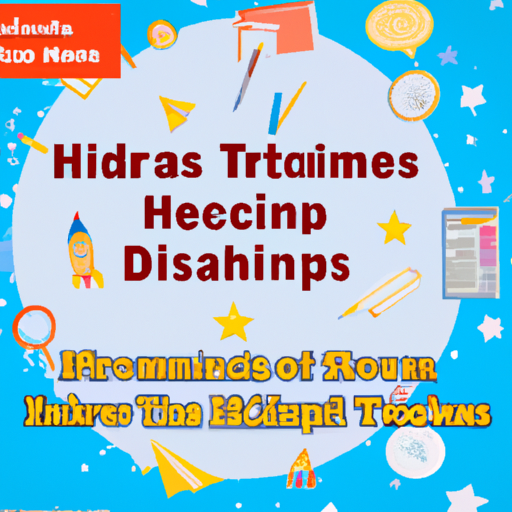In this article, you will discover a variety of effective ways to assess your child’s progress in homeschooling. We will explore different methods that go beyond traditional tests and grades, allowing you to gain a deeper understanding of your child’s learning journey. From tracking daily accomplishments to engaging in ongoing conversations, you will learn how to evaluate your child’s growth and make informed decisions for their education. Stay tuned to learn practical tips and insights on assessing your child’s progress in homeschooling.
Methods of Assessing Progress
Homeschooling provides a unique opportunity for parents to closely monitor their child’s progress and tailor their education to their individual needs. While traditional schooling relies heavily on standardized tests, homeschooling allows for a more holistic approach to assessment. In this article, we will explore various methods of assessing your child’s progress in homeschooling and provide tips and guidance on how to effectively use each method.
Standardized Tests
Importance of Standardized Tests
Standardized tests are often considered the gold standard in assessing a child’s academic progress. They provide a standardized measure of a student’s knowledge and skills, allowing for comparison with other students of the same age or grade level. While they have their limitations, standardized tests can still play a valuable role in homeschooling.
Different Types of Standardized Tests
There are several types of standardized tests available for homeschoolers. The most common ones are the Iowa Test of Basic Skills (ITBS) and the California Achievement Test (CAT). These tests assess a broad range of subjects and provide detailed reports on your child’s performance. Additionally, there are online platforms that offer standardized testing for homeschoolers.
Preparing for Standardized Tests
To prepare your child for standardized tests, it is crucial to establish a regular study routine. Focus on the core subjects, such as math, reading, and writing. Reviewing previous test materials and using practice tests can also be beneficial. However, it is essential to strike a balance between test preparation and maintaining a broad and engaging curriculum.
Interpreting Test Scores
After your child has taken a standardized test, it is important to interpret the scores correctly. Look for areas of strength and weakness to identify areas that may need more attention in your homeschooling curriculum. Remember that test scores are just one piece of the puzzle and should not be the sole basis for assessing your child’s progress.

Portfolios
What is a Portfolio?
A portfolio is a collection of your child’s work that provides a comprehensive overview of their progress and achievements. It can include samples of their written assignments, artwork, projects, and any other work that showcases their skills and abilities. Creating and maintaining a portfolio allows you to have a tangible record of your child’s growth and development over time.
Benefits of Portfolios
Portfolios offer many benefits in assessing your child’s progress. They provide a rich and diverse representation of their abilities beyond what a standardized test can capture. Portfolios also allow for a more personalized assessment, as they reflect your child’s unique interests and talents. Additionally, reviewing the portfolio together with your child can be a valuable learning experience and an opportunity for self-reflection.
Creating and Maintaining a Portfolio
To create a portfolio, set aside a designated space to store your child’s work. Organize it categorically, labeling each piece with the date and a brief description. Regularly update the portfolio, removing older work to make room for new accomplishments. Involve your child in the process, letting them select their best pieces and reflect on their progress.
Assessing Portfolios
When assessing portfolios, consider the overall growth and development demonstrated through the collected work. Look for evidence of improvement, critical thinking skills, creativity, and effective communication. Ask yourself whether the portfolio reflects a well-rounded education and addresses the learning goals you have set for your child. Remember to provide constructive feedback and encourage your child’s continued growth.
Observations
Importance of Observations
Observations are a valuable tool in assessing your child’s progress as they provide insight into their day-to-day performance. By observing your child in various learning situations, you can gain a deeper understanding of their strengths, challenges, and learning style. Observations also allow you to identify any areas that may require additional support or enrichment.
Methods of Observing Progress
There are various methods you can use to observe your child’s progress. One common approach is to simply observe them while they are engaged in their homeschooling activities. Take note of their level of focus, their engagement in the tasks, and their ability to independently complete assignments. Another method is to engage in conversations with your child, asking them questions about their learning experiences and listening to their responses.
Recording Observations
Keeping a record of your observations is essential, as it enables you to track your child’s progress over time. You can use a notebook or a digital document to jot down observations, noting the date, specific behaviors or accomplishments, and any insights or reflections you have. Be sure to record both positive and areas of improvement, as this will aid in creating a well-rounded assessment of your child’s progress.
Analyzing and Interpreting Observations
To analyze and interpret your observations, review them regularly and look for patterns or trends. Compare your observations to your child’s learning goals and curriculum objectives to assess their progress. Consider any challenges or areas where your child may need additional support, and brainstorm strategies to address these areas. Remember that observations should guide your homeschooling approach and provide valuable insights into your child’s learning journey.

Checklists
Using Checklists for Assessment
Checklists can be a useful tool for assessing your child’s progress in homeschooling. They provide a structured and organized way to track your child’s completion of specific tasks or skills. Checklists allow you to monitor progress and identify areas that may need further attention or reinforcement.
Creating Effective Checklists
When creating checklists, start by identifying the key tasks or skills you want to assess. Break them down into smaller, manageable steps that are developmentally appropriate for your child. Use clear and concise language, and consider adding checkboxes or spaces for comments to track completion and provide feedback.
Tracking Progress with Checklists
Checklists are most effective when used consistently and regularly. Incorporate them into your daily or weekly homeschooling routines, referring to them as your child completes tasks or assignments. Check off completed items and make note of any challenges or areas that require additional practice or support.
Evaluating Checklists
Regularly evaluate and review your checklists to gauge your child’s progress. Look for patterns of completion, consistency, and mastery of skills. Assess whether the checklists align with your overall homeschooling objectives and whether they provide an accurate representation of your child’s progress. Modify and update checklists as needed to ensure they remain relevant and effective.
Progress Reports
Understanding Progress Reports
Progress reports are a valuable tool for tracking and assessing your child’s development. They provide a comprehensive summary of their progress in various areas of learning, including academic achievements, social-emotional development, and learning behaviors. Progress reports can serve as a communication tool between you, your child, and any other stakeholders involved in your homeschooling journey.
Components of a Progress Report
A well-rounded progress report should include a balance of both qualitative and quantitative information. It should highlight your child’s strengths, areas of growth, and any specific achievements or challenges. In addition to academic performance, progress reports should also address social skills, work habits, and any other relevant areas of development.
Effective Communication in Progress Reports
When writing progress reports, use clear and concise language that is accessible to all readers. Avoid jargon and technical terms, explaining any educational terminology that may be unfamiliar to others. Strike a balance between providing constructive feedback and celebrating your child’s accomplishments. Remember that progress reports are not just for assessment but also for fostering open communication and collaboration with your child.
Setting Goals Based on Progress Reports
Progress reports can serve as a starting point for setting goals and planning future homeschooling activities. Use the information provided to identify areas for improvement or growth and develop specific, measurable goals. Involve your child in the goal-setting process, allowing them to contribute their thoughts and aspirations. Regularly revisit and update these goals based on ongoing assessments and feedback.
Challenges and Solutions
Identifying Challenges in Assessing Progress
While homeschooling allows for personalized assessment, it also presents unique challenges. Some common challenges include ensuring objectivity in assessments, accurately measuring progress in non-academic areas, and addressing biases or limitations in the assessment methods used. It is crucial to acknowledge these challenges and seek solutions to ensure a balanced and accurate assessment of your child’s progress.
Addressing Common Assessment Challenges
Addressing assessment challenges requires a proactive and flexible approach. Consider using a combination of assessment methods to capture a comprehensive picture of your child’s progress. Seek feedback from other trusted individuals, such as a mentor, support group, or online community, to gain fresh perspectives and insights. Regularly reflect on your assessment practices and make adjustments as needed.
Involving the Child in Assessments
Involving your child in the assessment process fosters ownership and empowers them to take an active role in their education. Encourage your child to self-assess and reflect on their progress. Provide opportunities for them to set goals, evaluate their work, and participate in parent-child conferences to discuss their progress. This collaborative approach promotes self-awareness and a sense of responsibility for their learning.
Seeking Support for Assessment
If you find assessing your child’s progress challenging or overwhelming, consider seeking support from homeschooling resources and professionals. Join a local homeschooling association or online community where you can connect with experienced homeschoolers and share ideas and strategies. Additionally, seek guidance from educational consultants or tutors who specialize in homeschooling assessments.
Creating a Balanced Assessment Approach
Combining Multiple Assessment Methods
To create a balanced assessment approach, combine multiple methods discussed earlier. Each method provides a unique perspective on your child’s progress, and using a variety of methods ensures a more comprehensive assessment. Regularly review and analyze the data collected from different methods to gain a holistic view of your child’s development.
Individualizing Assessments
In homeschooling, assessment should be tailored to meet the individual needs and learning styles of your child. Consider their interests, strengths, and challenges when selecting and designing assessment methods. Personalize assessments to encourage active engagement and a deep understanding of the subject matter. Individualizing assessments ensures a more accurate representation of your child’s progress.
Focusing on Holistic Development
Assessment in homeschooling should not be limited to academic achievements. Emphasize the importance of holistic development by assessing your child’s social skills, emotional well-being, and personal growth. Consider incorporating projects, presentations, and discussions into your assessment methods to assess critical thinking, creativity, and collaboration.
Adapting Assessment Strategies
As your child grows and develops, adapt your assessment strategies to align with their changing needs and abilities. Regularly evaluate and reflect on your assessment methods to ensure they remain effective and relevant. Stay open to new approaches and tools, and be willing to experiment and adjust your methods as necessary.
Importance of Feedback and Adjustments
Providing Timely and Constructive Feedback
Feedback plays a crucial role in the assessment process. Timely and constructive feedback helps your child understand their strengths and areas for improvement. Provide specific examples and suggestions for growth, highlighting both successes and areas that need more attention. Make feedback a regular part of your homeschooling routine, encouraging ongoing learning and growth.
Using Feedback to Guide Instruction
Feedback should not only inform your child but also guide your instructional approach. Identify areas where your child may need additional support or enrichment based on feedback. Adapt your homeschooling activities and teaching strategies to address these areas, ensuring that you provide a well-rounded and tailored education.
Modifying Teaching Approaches Based on Assessment
Assessments provide valuable insights into your child’s progress, which can guide adjustments in your teaching approaches. If a particular teaching method is not yielding the desired results, consider trying different approaches or resources. Be flexible and adaptable, continuously seeking to improve your homeschooling methods based on ongoing assessments.
Continuous Evaluation and Adjustments
Assessment in homeschooling is an ongoing process that requires continuous evaluation and adjustments. Regularly review and analyze your assessment data to identify areas of strength, areas for improvement, and any emerging patterns or trends. Use this information to refine your homeschooling curriculum, goals, and instructional strategies to better meet your child’s needs.
Conclusion
Assessing your child’s progress in homeschooling is a multifaceted process that requires a combination of methods and a flexible approach. By using standardized tests, portfolios, observations, checklists, and progress reports, you can gain a comprehensive understanding of your child’s development. Incorporating feedback and continuously adjusting your approach will help you provide the best possible education tailored to your child’s individual needs. Embrace the opportunity to assess your child’s progress in homeschooling as an ongoing journey of learning and growth.






